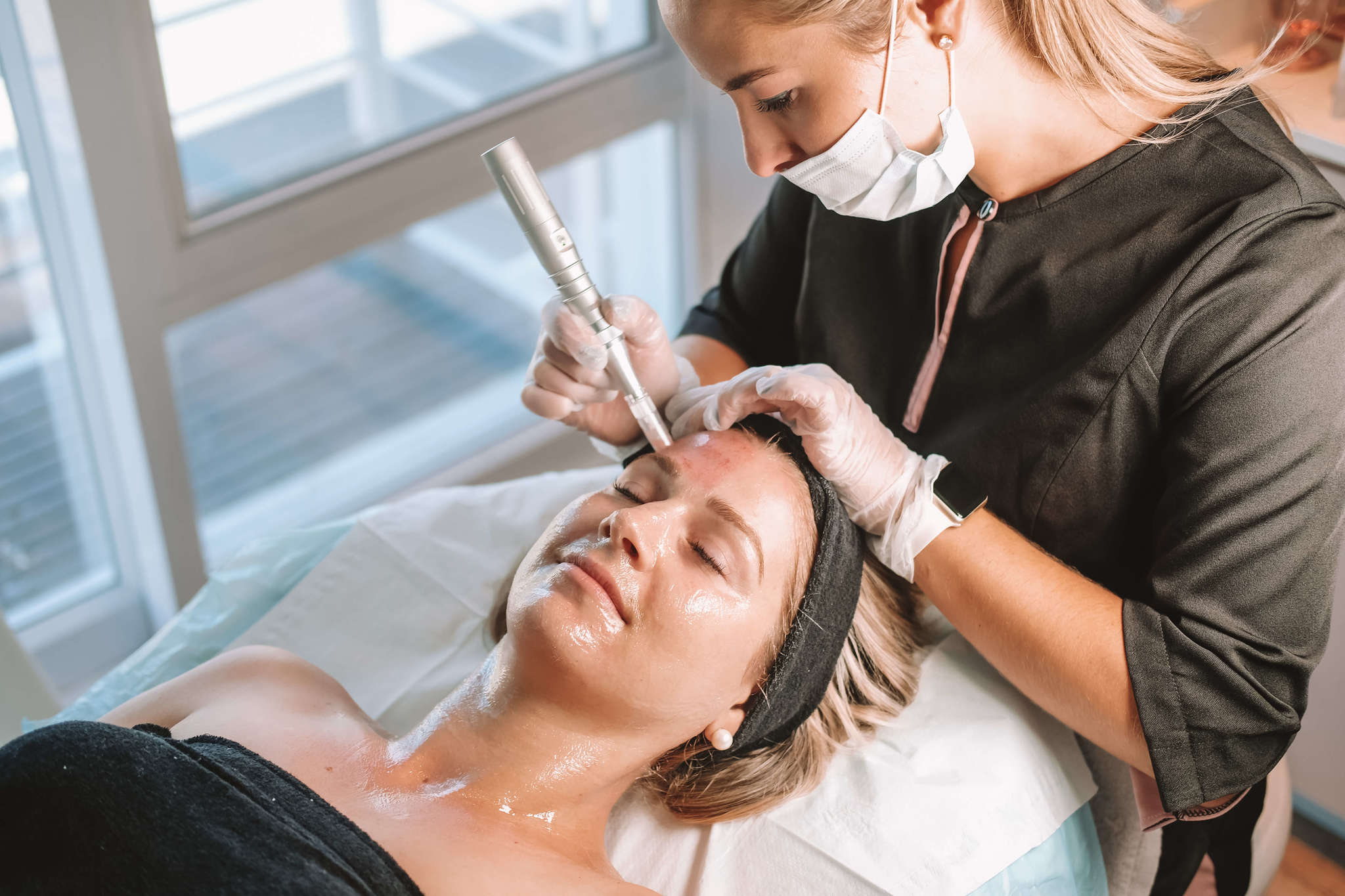Microneedling has gained recognition as an effective treatment for addressing various skin concerns, from fine lines to uneven texture. This minimally invasive procedure uses controlled micro-injuries to stimulate your skin’s natural healing processes, leading to visible improvements in both texture and tone. Understanding how microneedling works and what to expect can help you make informed decisions about this popular skin rejuvenation treatment.
What Is Microneedling?
Microneedling is a cosmetic procedure that involves creating tiny, controlled punctures in the skin using fine needles. These microscopic channels trigger your body’s natural wound-healing response, which includes increased collagen and elastin production. This increased collagen production helps improve skin structure, leading to a smoother, more even appearance over time.
Standard microneedling relies solely on the mechanical action of needles to stimulate collagen production. Radiofrequency (RF) microneedling combines traditional microneedling with radiofrequency energy, which heats the deeper layers of skin. This dual approach can enhance the treatment’s effectiveness by improving the skin-tightening effect.
What Does This Treatment Look Like?
The microneedling procedure typically follows a structured process designed to maximize results while minimizing discomfort. Before your procedure, your practitioner will cleanse your skin thoroughly and may apply a topical numbing agent to reduce any discomfort. The treatment area is then ready for the microneedling process.
The Procedure Process
A microneedling device is moved across your skin in a systematic pattern, creating thousands of micro-channels. The entire process usually takes around 30 minutes for facial treatments, depending on the size of the treatment area. Needle penetration depth is adjusted based on your skin type and treatment goals.
The Post-Treatment Experience
Immediately after treatment, your skin may appear red and feel similar to a mild sunburn. This reaction is normal and typically subsides within a few days. Some patients also experience minor swelling or pinpoint bleeding at the treatment sites. Your practitioner will provide specific aftercare instructions, which typically include avoiding direct sun exposure, using gentle skincare products, and applying a broad-spectrum sunscreen daily.
What Are the Benefits?
Microneedling offers multiple advantages for individuals seeking to improve their skin’s appearance and texture. The controlled micro-injuries created during microneedling stimulate your skin’s natural repair mechanisms. As new collagen forms, it helps smooth out irregularities in skin texture, including:
- Fine lines and wrinkles
- Acne scars
- Stretch marks
- Enlarged pores
- Rough or bumpy skin texture
While some improvements may be visible within days of treatment, the full benefits of microneedling typically develop over several weeks to months. The collagen remodeling process continues for up to six months after treatment, leading to progressive improvements in skin quality. Most patients benefit from a series of treatments spaced 4-6 weeks apart. The exact number of sessions needed varies based on individual skin concerns and treatment goals, with most people receiving 3-4 treatments for optimal results.
Consult a Dermatology Specialist
Microneedling represents a scientifically backed approach to skin rejuvenation that can address multiple concerns simultaneously. The treatment’s ability to stimulate natural collagen production makes it particularly effective for improving both skin texture and tone. Working with a qualified dermatology specialist allows you to receive personalized treatment recommendations based on your specific skin type and concerns.
- How To Create a Personalized Weight Loss Plan
- The Importance of Foot Care for Diabetes: Prevention Tips You Need
- Cutting vs. Polishing Tools in Dentistry: Key Differences Every Dental Professional Should Know
- What Are the Symptoms of Depression?
- Understanding the Role of Neurologists in Managing Chronic Headaches


Leave a Reply